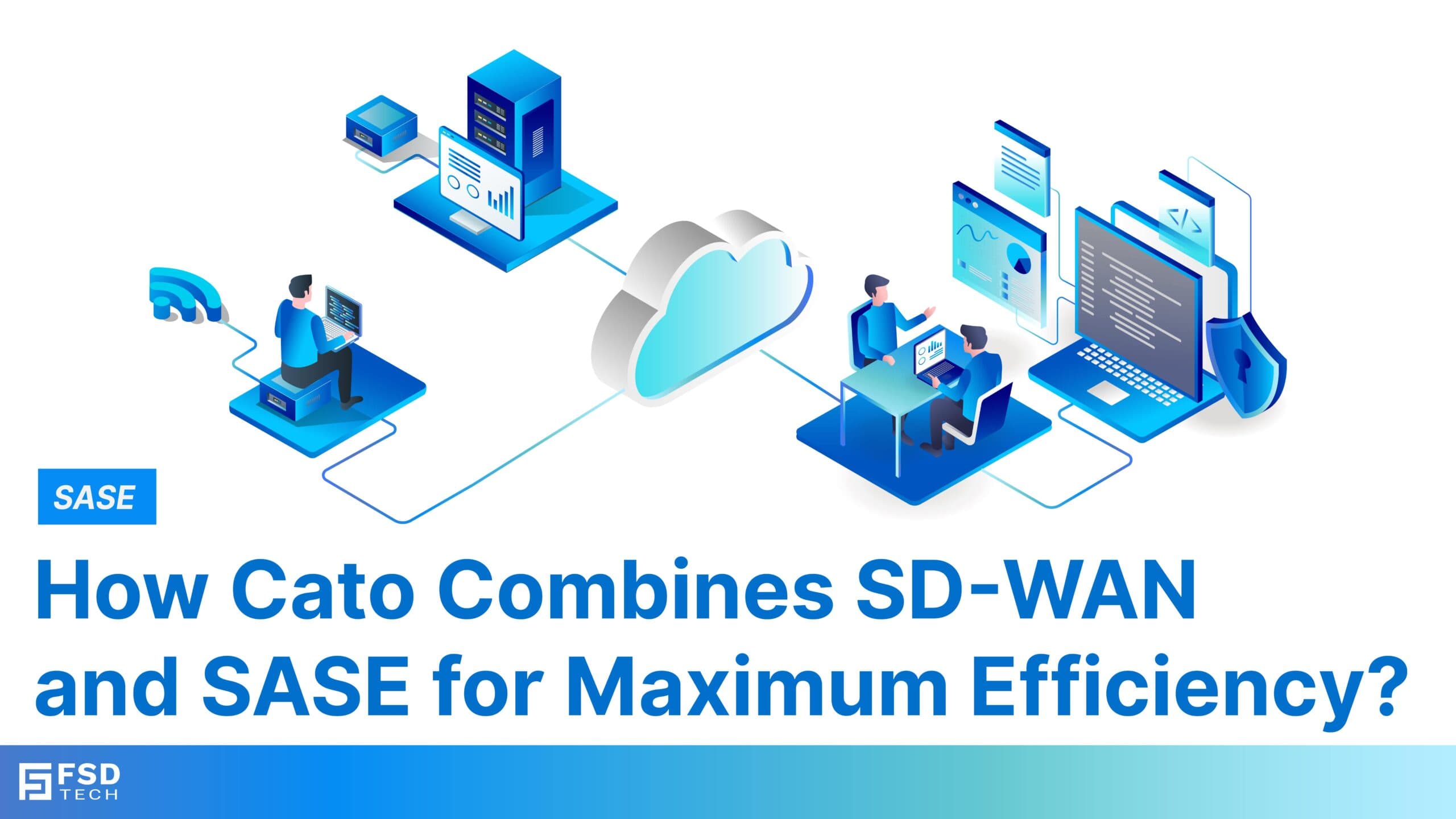
Inside Cato’s SASE Architecture: A Blueprint for Modern Security
🕓 January 26, 2025

In a world where digital transformation is essential for business success, organizations are increasingly seeking solutions that enhance network connectivity, security, and efficiency. Combining Software-Defined Wide Area Network (SD-WAN) with Secure Access Service Edge (SASE), Cato Networks has developed a model that optimizes network performance while safeguarding data.
This article explores how Cato combines SD-WAN with SASE, the benefits of this integration, and how it maximizes operational efficiency for modern enterprises.
SD-WAN plays a crucial role in the SASE framework. Traditionally, SD-WAN was developed as a means to simplify connectivity by routing network traffic based on real-time data, providing an effective alternative to traditional Multiprotocol Label Switching (MPLS) circuits. In the SASE model, however, SD-WAN serves as the foundation for secure, efficient, and flexible network connectivity, especially as businesses increasingly rely on cloud services and remote workforces.
The integration of SD-WAN with SASE in the Cato model provides several key benefits that enhance both network performance and security.
Cato’s SD-WAN is more than a simple traffic-routing solution—it’s a sophisticated tool that enhances overall network performance. Here’s how it works:
Also Read: New AI-Driven Firewall Analysis and Insights: Making Internet Firewall Smarter, Safer, and Simpler
The integration of SD-WAN and SASE in Cato’s model consists of several essential components:
Traditional MPLS solutions have long been the standard for enterprise connectivity, but SD-WAN offers several advantages.
| Feature | MPLS | SD-WAN in Cato’s SASE |
| Scalability | Limited | Highly scalable |
| Cost Efficiency | Expensive for multiple sites | Cost-effective for distributed networks |
| Security Integration | Requires separate appliances | Integrated security with ZTNA, SWG, FWaaS |
| Management Complexity | High | Simplified, centralized management |
Cato’s SD-WAN eliminates many of the limitations associated with MPLS, providing a flexible, scalable, and secure alternative.
The integration of SD-WAN and SASE in Cato’s model offers a comprehensive solution for optimizing network performance and security. With its application-aware routing, resilient connectivity, and automatic failover, Cato’s SD-WAN streamlines network performance, providing a flexible, scalable, and secure alternative to traditional MPLS solutions. Overall, Cato’s SD-WAN and SASE integration delivers enhanced application performance, reduced overhead costs, and streamlined management, making it a valuable asset for modern enterprises.
Integrating SD-WAN with SASE enhances both network connectivity and security, allowing businesses to benefit from optimized routing and built-in security measures.
Cato SD-WAN integrates security functions, such as Zero Trust Network Access (ZTNA) and Secure Web Gateway (SWG), into the network, creating a unified, cloud-native solution.
Yes, Cato SD-WAN provides a cost-effective, scalable alternative to MPLS, with enhanced security and flexibility.
Cato’s SD-WAN is a software-defined WAN solution that routes traffic efficiently across multiple network paths. When integrated with SASE, it combines networking and security in a single cloud-based platform, providing secure, optimized network connectivity for users and applications worldwide.
Cato’s SD-WAN uses dynamic routing, optimizing traffic based on real-time conditions to avoid congestion. It reduces latency and packet loss, ensuring that critical applications like video conferencing and VoIP maintain high performance across distributed locations.
Cato’s SASE platform integrates several security features, including Firewall-as-a-Service (FWaaS), SWG, Cloud Access Security Broker (CASB), and ZTNA, delivering comprehensive protection across all users and devices.
Yes, Cato’s SD-WAN provides reliable, high-performance connectivity that can replace or supplement MPLS networks. It offers flexibility and cost savings while maintaining consistent and enhanced application performance.
Cato’s SD-WAN extends secure, optimized network connectivity to remote and hybrid workers by connecting them to the nearest Cato Point of Presence (PoP). This provides reliable access to company resources, reducing latency and ensuring data security regardless of location.
Yes, Cato’s SD-WAN enables seamless and secure access to multiple cloud providers, optimizing traffic for cloud applications and allowing IT teams to apply consistent security policies across cloud environments.
ZTNA enforces strict, identity-based access policies, allowing users access only to specific applications based on their identity and role. This principle of “never trust, always verify” enhances security by reducing the risk of unauthorized access.
Cato’s SASE includes real-time threat detection using advanced analytics and machine learning. It proactively identifies and mitigates threats, ensuring continuous protection across the entire network.
Yes, Cato’s SASE provides encryption, logging, and real-time monitoring, which are essential for regulatory compliance. It helps organizations adhere to data protection standards and industry regulations, simplifying audit and reporting processes.
Cato’s SASE consolidates multiple networking and security functions into a single platform, reducing the need for separate, expensive hardware appliances. Centralized management also reduces administrative overhead, saving time and costs.
Yes, Cato’s SD-WAN provides centralized management with a user-friendly interface, allowing IT teams to monitor and configure policies across the entire network from one console, which simplifies operations and troubleshooting.
Cato’s solution is highly scalable due to its cloud-native design. Organizations can easily add new locations, users, and applications without significant reconfiguration, making it ideal for growing businesses and dynamic environments.
Cato’s SASE adapts to evolving security threats, network requirements, and user needs by continuously updating and expanding its services in the cloud. This future-ready architecture supports digital transformation and growth, ensuring the network is resilient and adaptable.

MJ is the Lead Solutions Architect & Technology Consultant at FSD-Tech. He has 20+ years of experience in IT Infrastructure & Digital Transformation. His Interests are in Next-Gen IT Infra Solutions like SASE, SDN, OCP, Hybrid & Multi-Cloud Solutions.
Share it with friends!
share your thoughts